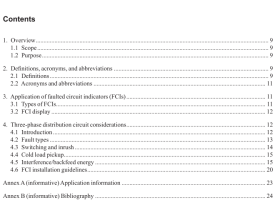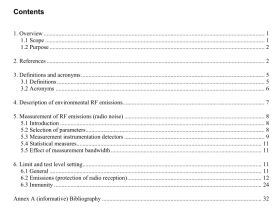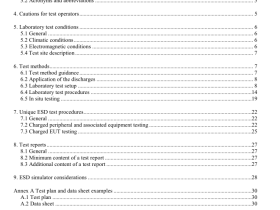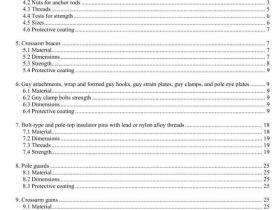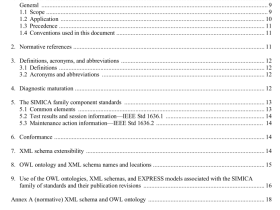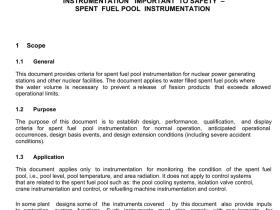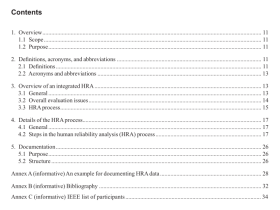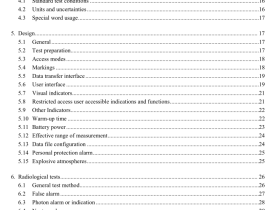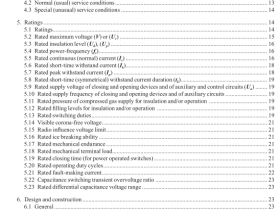IEEE N42.38 pdf download
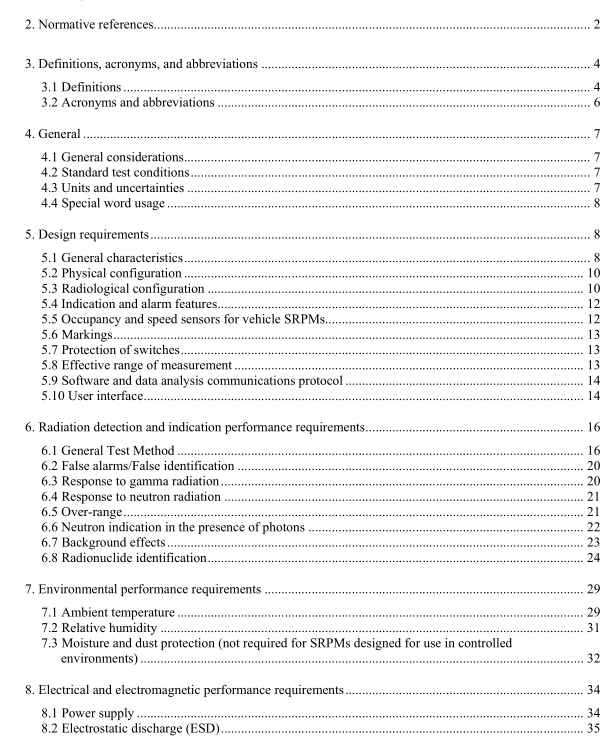
IEEE N42.38 pdf download American National Standard for Performance Criteria for Spectroscopy-Based Portal Monitors Used in Homeland Security
1.2 Purpose
The purpose of this standard is to specify the performance criteria and test methods for SRPMs used forhomeland security. Testing is conducted under a set of conditions to determine if an SRPM meets therequirements of this standard. Special applications,which could include an SRPM’s operation underweather conditions not addressed by this standard, shall require additional testing. Detection needs notaddressed by this standard shall also require additional testing,e.g.,estimation of the backgrounddepression due to vehicle presence, masking, or shielding configurations.
Obtaining operating performance that meets or exceeds the specifications stated in this standard dependsupon properly installing the SRPM, establishing appropriate operating parameters, providing security forthe systems,maintaining calibration,implementing a suitable routine testing and maintenance program,auditing compliance with quality requirements, and providing proper training for operating personnel.
2. Normative references
The following referenced documents are indispensable for the application of this document (i.e., they mustbe understood and used, so each referenced document is cited in text and its relationship to this document isexplained).For dated references, only the edition cited applies. For undated references, the latest edition ofthe referenced document (including any amendments or corrigenda) applies.
ANSI C63.4,American National Standard for Methods of Measurement of Radio-Noise Emissions fromLow-Voltage Electrical and Electronic Equipment in the Range of9 kHz to 40 GHz.’
ANSI N42.22,American National Standard—Traceability of Radioactive Sources to the National Instituteof Standards and Technology (NIST) and Associated Instrument Quality Control.2
ANSI N42.23,American National Standard Measurement and Associated Instrumentation QualityAssurance for Radioassay Laboratories.
ANSI N42.42,American National Standard Data Format Standard for Radiation Detectors Used forHomeland Security.3
ANSI/TIA-232-F-1997,Interface Between Data Terminal Equipment and Data Circuit-TerminatingEquipment Employing Serial Binary Data Interchange.*
ANSI/TIA/EIA-485-A-1998,Electrical Characteristics of Generators and Receivers for Use in BalancedDigital Multipoint Systems.
FCC Rules, U.S.Code of Federal Regulations,Title 47 Part 15 (47 CFR 15), Telecommunication—RadioFrequency Devices.3
IAEA Safety Guide No.RS-G-1.9,Categorization of Radioactive Sources.6
decade: A range of values for which the upper value is ten times greater than the lower value.
detection assembly: The monitor enclosure that includes the detector, the associated clectronics and themounting components.
NOTE—The lower detcction limit is the minimum statistically quantifiable instrument response or reading.T he upperdetection limit is the maximum level at which the instrument meets the required accuracy.
detection zone: The region that is either located between opposing detection assemblies or adjacent to adetection assembly over which the detection requirements are satisfied.
NOTE—Annex B shows a diagram of the detection zone.
detector: A device or component designed to produce a quantifiable response to ionizing radiationnormally mcasured clectronically.
effective range of measurement: Range of measurements within which the requirements of this standardare met.
efficiency: The number of counts in a region corresponding to the energy of the emitted gamma rays minusthe background counts in the same region registered by the detector per unit time divided by the number ofphotons of that energy originating from the radioactive source that is being measured during the same unitof time.
exposure: The measure of ionization produced in air by x-ray or photon radiation.
NOTE—The special unit of exposure rate is the Roentgen per hour, abbreviated in this standard as R/h.
false alarm:An indication of the presence of a radioactive source or increase in the measured radiationlevel when that radioactive source or increase is not present.
false identification: An identification of a radionuclide that is not present.
indication: Displayed signal from the instrument to the user conveying information such as scale ordecade, status, malfunction, or other critical information.
influence quantity: Quantity that may have a bearing on the result of a measurement without being thesubject of the measurement.
instrument: A complete system consisting of one or more assemblies designed to quantify one or morecharacteristics of ionizing radiation or radioactive material.
manufacturer: The organization,typically including the designer or developer,that produces theequipment and software.
monitoring: Means provided to continuously indicate the state or condition of a system or assembly.NOTE—The term may also be used for the real-time measurement of radioactivity or exposure rate.
occupancy: When an object (person, vehicle, package, etc.) being monitored is in the detection zone.
over-range response: The response of an instrument when exposed to radiation intensities that are greaterthan the upper measurement limit.Syw: overload response.
